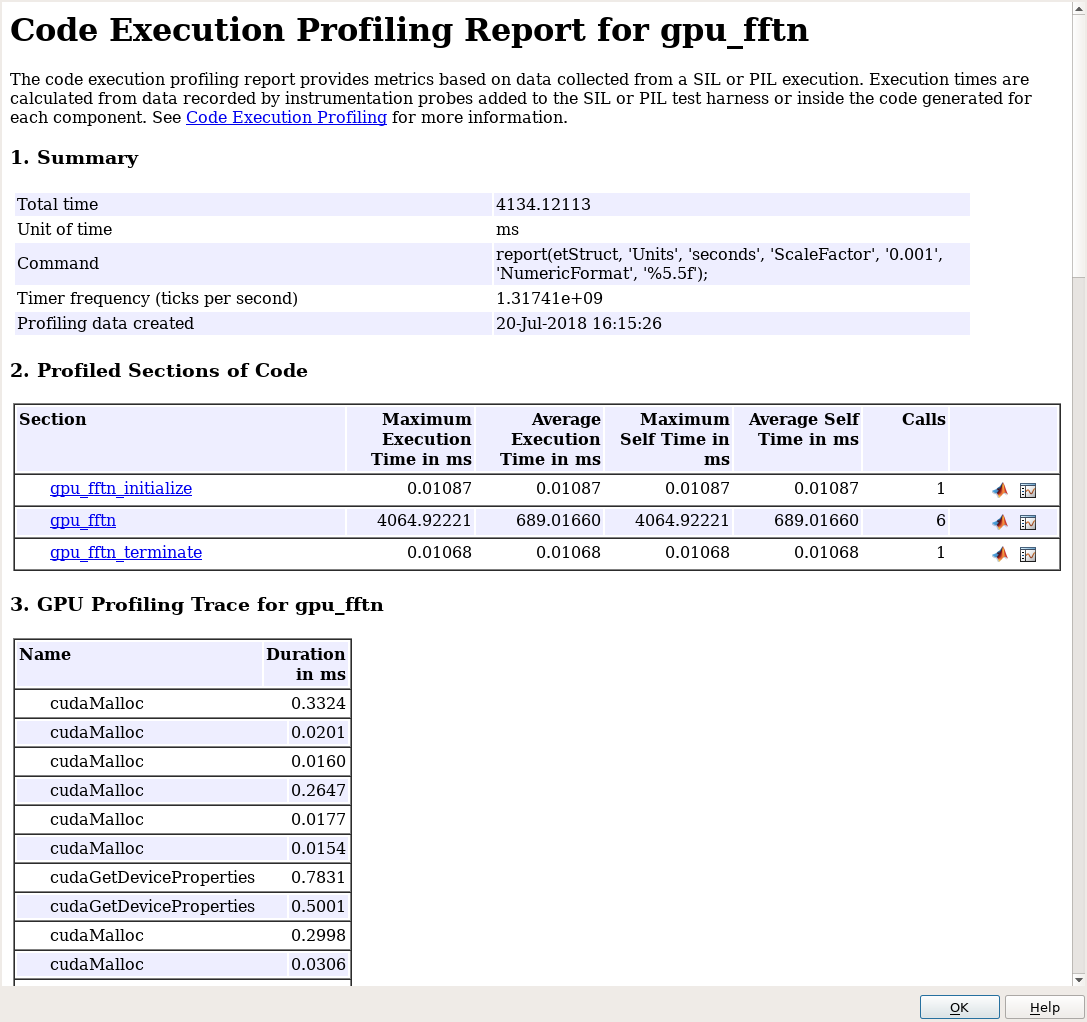gpucoder.profile
(Removed) Create an execution profile report for generated CUDA code
gpucoder.profile has been removed. Use gpuPerformanceAnalyzer instead. For more information, see Version History.
Description
gpucoder.profile(
generates an execution profiling report of the CUDA code generated for the design file
func_name,codegen_inputs)func_name. The codegen_inputs argument specifies the
inputs to the design file. You must install the Embedded Coder® product to generate the profiling report.
Note
The profiling workflow depends on profiling tools from NVIDIA®. From CUDA® Toolkit v10.1 onwards, NVIDIA restricts access to performance counters to admin users. To enable GPU performance counters for all user accounts, see the instructions in Permission issue with Performance Counters (NVIDIA).
Note
The profiling tools from NVIDIA might not support legacy GPU hardware such as the Kepler family of devices. For information on supported GPU devices, see the NVIDIA documentation.
gpucoder.profile(___,
generates an execution profiling report with one or more profiling options specified as a
name-value pair argument.Name,Value)
